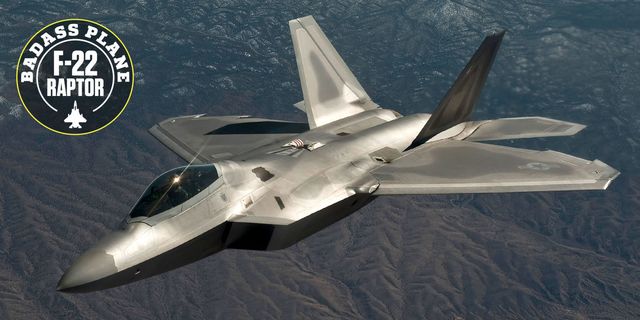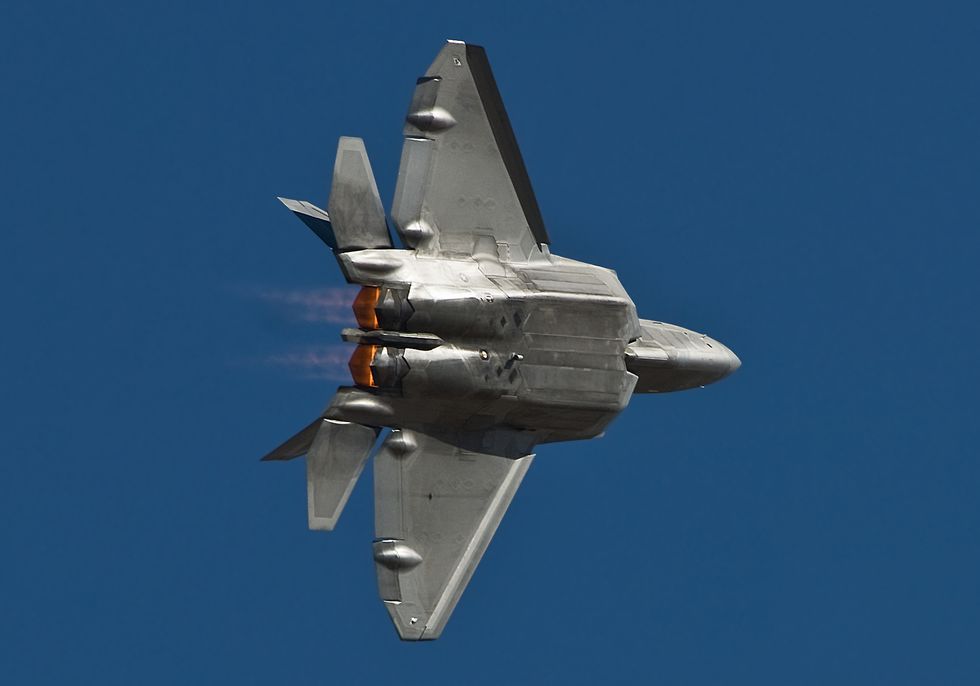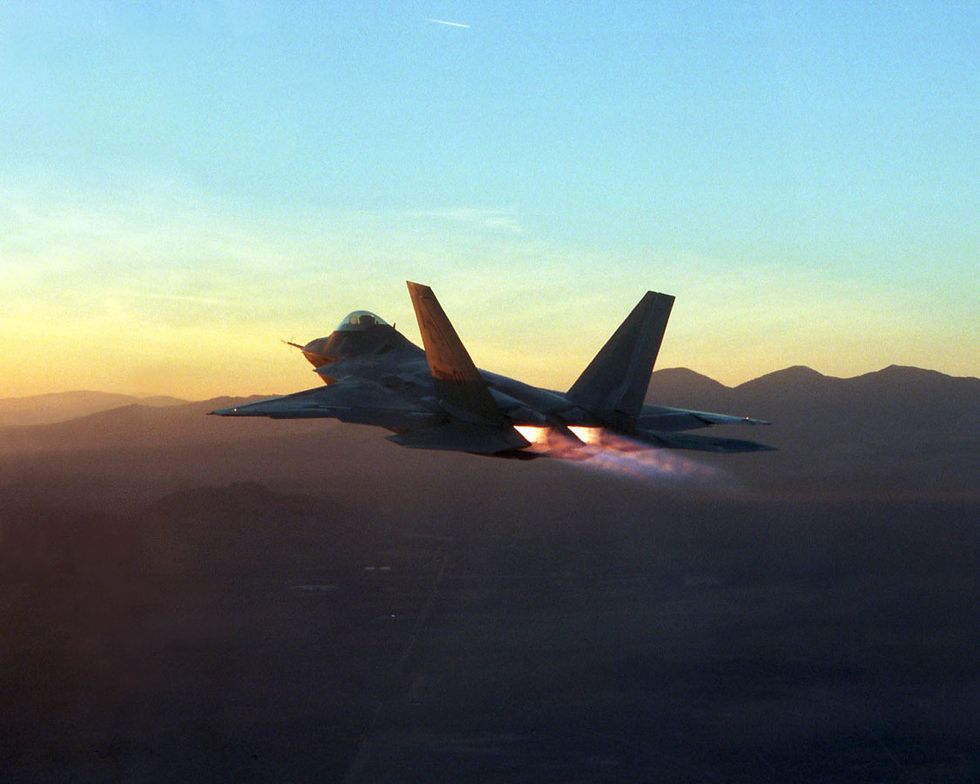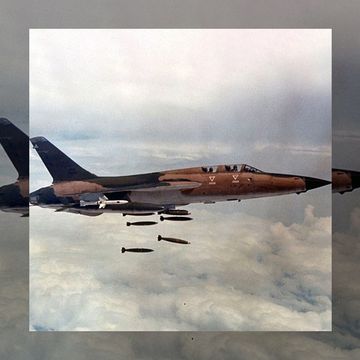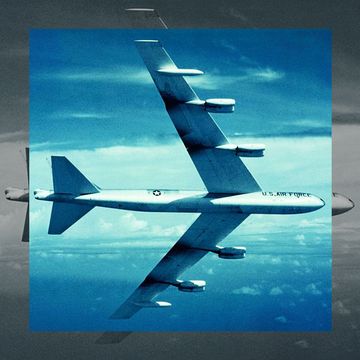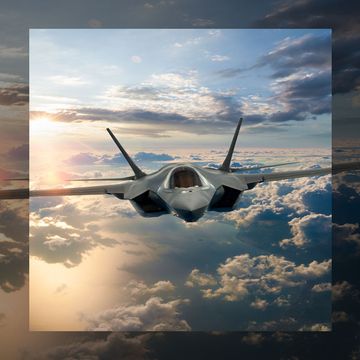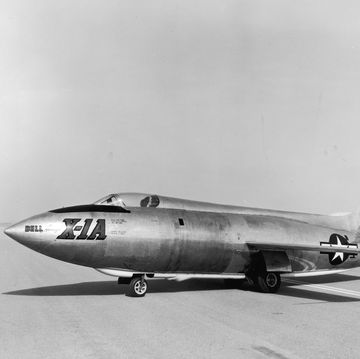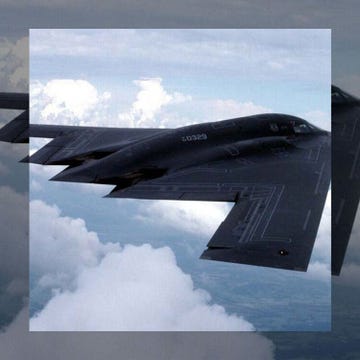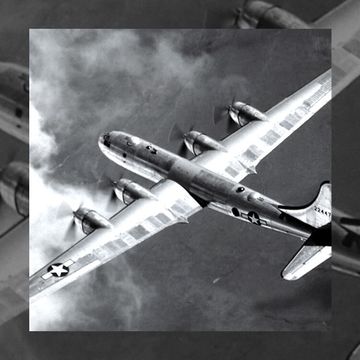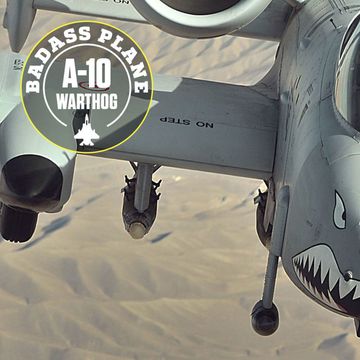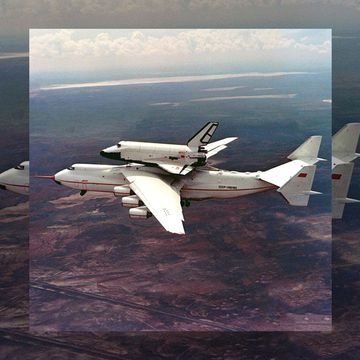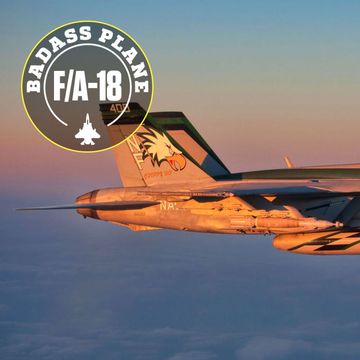On an otherwise unremarkable day in March 2013, an American MQ-1 Predator drone was flying in international airspace off Iran, conducting a routine surveillance flight over the Persian Gulf. But the U.S. Air Force knew trouble might be lurking ahead.
Several months earlier, a pair of Iranian Sukhoi Su-25 attack planes had attempted unsuccessfully to shoot down another patrolling Predator. After that, the Pentagon decided subsequent drone patrols would be escorted, either by F/A-18 Hornets from the USS John C. Stennis aircraft carrier or F-22s deployed to nearby Al Dhafra Air Base in the United Arab Emirates. On this day, Lt. Col. Kevin "Showtime" Sutterfield was the escort, heading toward the drone in case of trouble.
"Showtime" was in a Raptor.
At the annual conference of the Air Force Association later that year, USAF Chief of Staff Gen. Mark Welsh would tell the crowd what happened next: As the Predator flew its pre-planned route, two Iranian F-4 Phantoms approached and acquired the drone on their radars. One of the Phantoms got to within 16 miles of the MQ-1. On another heading, Col. Sutterfield closed in on the F-4.
"Showtime is an Air Force Reservist … he flies the F-22. He flies it really well," Welsh said. "He flew under their [Phantom] to check out their weapons load without them knowing that he was there. And then he pulled up on their left wing and then called them and said, 'You really ought to go home.'"
When you hear enough stories like this one, it becomes no surprise to find out that many people—including members of Congress—are toying with the idea of restarting the F-22 production line and making more Raptors. Russia and China are catching up with American airpower. They're on the cusp of fielding airplanes like the Sukhoi PAK-FA and Chengdu J-20 that can beat 4th generation fighters like the F-15, F-16, and F/A-18, preventing these and other strike aircraft from penetrating their defenses. But the F-22—the first 5th generation fighter and still the only operational one—retains an edge over such threats. Trouble is, America has 186 Raptors, only 123 of which are combat-capable.
The next big thing, of course, is the F-35. The U.S. eventually will deploy the Joint Strike Fighter, but as Gen. Welsh told Defense News last year, the F-35 "was never designed to be the next dogfighting machine. It was designed to be the multipurpose, data-integration platform that could do all kinds of things in the air-to-ground arena."
The Raptor was all about air-to-air combat from the very start.
Advanced Tactical Fighter
The F-22 was born of the Cold War. In the early 1980s, the Air Force wanted what it called the Advanced Tactical Fighter (ATF), a new air superiority fighter to replace the F-15 Eagle and F-16 Falcon. It was a response to the Soviet MiG-29 Fulcrum and Su-27 Flanker that threatened American air dominance.
Two teams formed. One was made up of Lockheed, Boeing, and General Dynamics, while Northrop and McDonnell Douglas constituted the competition. A competitive four-year demonstration followed, culminating in the flight test of two demonstration prototypes, the YF-22 and YF-23. The Lockheed-led team used thrust-vectoring nozzles on its YF-22 for enhanced maneuverability in dogfights. The Northrop team, meanwhile, prioritized stealth and supercruise (prolonged supersonic flight without the use of afterburners).
In April 1991, Secretary of the Air Force Donald Rice announced the YF-22 as the victor. The Air Force considered the YF-23 stealthier and faster (its supercruise and top speed were both purportedly higher) but the YF-22 was more maneuverable and regarded as less technologically risky. While both aircraft featured internal weapons bays, Lockheed successfully fired AIM-9 Sidewinder and AIM-120 AMRAAM missiles from its YF-22 demonstrator. Northrop's YF-23 did not fire any.
Ironically, a number of changes to the F-22 during the run-up to production made it look more like the YF-23. The vertical stabilizers were shifted rearward and shrunk by 20 percent. The canopy was moved forward and the engines' intakes toward the rear to improve pilot visibility, a clear concession to the importance of maneuvering and, if need be, dogfighting.
Raptor 4001, the first of eight development versions of the F-22, rolled out of Lockheed's plant at Marietta, GA in April 1997 and flew on September 7. Lockheed chief test pilot Paul Metz climbed into the cockpit wearing his lucky 'Super Chicken' T-shirt under his flight suit. On takeoff Metz pulled the Raptor's nose up and quickly gained speed and altitude. Even with the Raptor's landing gear down, the pilot flying the safety chase aircraft, Jon Beesley, had put his F-16 in afterburner to keep up.
The airplane remained in production for 15 years, at a rate of roughly two per month during its peak. The last Raptor was completed in December 2011 and delivered to the USAF on 2 May 2012.
Well, maybe it was the last. The F-22's remarkable combination of abilities has plenty of people thinking the production line stopped too soon.
Stealth and Speed
The shape of the F-22 is a compromise: It reconciles minimizing drag for aerodynamics with minimizing radar and infrared signature for stealth. The titanium composite airframe features clipped delta wings with a reverse sweep on the rear. Flight control surfaces include leading and trailing-edge flaps (to generate increased lift), ailerons (which make the airplane roll), and rudders on the canted vertical stabilizers. Single-piece horizontal tailfins (also called stabilators) provide pitch control and also act as speed brakes.
Unlike the faceted shape of the F-117 Nighthawk stealth fighter, the F-22 has no right angles on the exterior. Instead, many of the surface shapes are curves with changing radii. These curves scatter radar beams in various directions rather than back to the radar source. Sawtooth shapes on cockpit edges, landing gear doors and other openings also break up radar. The inner trailing edges of the main wing and leading edges of the horizontal stabilizers line up exactly, making them appear much smaller on radar. The vertical tailfins are angled to deflect radar and conceal the internal antennas.
A coating applied to the aircraft's skin absorbs radar energy. The cockpit is even designed to minimize radar returns from the pilot's helmet, and it does all this without minimizing visibility, which is a problem on the F-35. In addition to enhancing maneuverability, the horizontal tailfins at the aircraft's rear act as a shield for engine exhaust heat to make things harder for heat-seeking missiles.
The F-22's two Pratt & Whitney F119-PW-100 afterburning turbofan engines produce more thrust than any current fighter engine—about 35,000 lbs. each. The two-dimensional thrust vectoring nozzles (horizontal slats above and below the exhaust outlet which rotate up or down in concert) on each give the airplane unmatched pitch capability that translates into superior maneuverability. They push the Raptor to an officially stated "Mach two class" top speed and allow supercruise at Mach 1.5 without afterburner. They also allow the F-22 to operate at very high altitude, well above the published 50,000 ceiling.
With two external wing tanks adding to its 18,000-lb. fuel capacity, the F-22 can fly 1,600 nautical miles, with a maximum combat radius of 410 nm using supercruise. It carries a M61A2 20-millimeter cannon with 480 rounds for close-in dogfighting and strafing. Inside its internal weapons bays are two AIM-9 infrared air-to-air missiles and six AIM-120 radar-guided air-to-air missiles. For strike missions, the Raptor is loaded with two 1,000-lb. GBU-32 JDAMs and two AIM-120 radar-guided air-to-air missiles.
But perhaps the Raptor's greatest asset is its integrated avionics suite. Dual integrated processors crunch data from the Raptor's coordinated sensors, weapons, and datalink. The prime sensor is Northrop Grumman's AN/APG-77 Active Electronically Scanned Array radar which provides rapid beam agility, low radar cross-section and target detection capability out to ranges beyond 150 miles.
The powerful radar pairs with BAE Systems' AN/ALR-94 radar warning receiver and Lockheed Martin's AN/AAR-56 infrared and ultraviolet Missile Launch Detector (MLD). The MLD features six sensors that provide full spherical infrared coverage. The BAE technology is a passive radar detector with more than 30 antennas blended into the wings and fuselage for all-round coverage.
Talons Out
The Raptor excelled in combat exercises after the plane became fully operational in 2005. In Exercise Northern Edge in Alaska in June 2006, a dozen F-22s of the 94th Fighter Squadron downed 108 adversaries in simulated combat with no losses. Over the course of the exercises, a Raptor-led Blue Force amassed 241 kills against two losses in air-to-air combat, with neither loss being an F-22.
The vast majority of "kills" the F-22 achieved during such exercises happened from beyond visual range, with Raptors zapping opposing fighters before the adversaries even knew they were there. The F-22s tended to operate at very high altitudes, where they could use the high ground to maximize their already excellent radar sight. The Raptor's kill potential was limited only by the number of missiles it carried; after their engagements, F-22s would stay on-station directing other fighters toward targets.
That said, the Raptor is not perfect. Subsequent exercises with Indian Air Force and Malaysian Air Force Sukhoi Su-30 fighters as recently as 2014 showed the F-22 to be superior but also vulnerable to larger numbers of the Russian-built aircraft. Techniques such as Digital Radio Frequency Memory (DRFM) jamming—an electronic method for digitally capturing and retransmitting an RF signal—could negate the advantages of the Raptor's radar and AIM-120 AMRAAM missiles. The lack of a helmet-mounted sight (which the Su-30 has, paired with missiles like the AA-11 Archer) and carrying just two sidewinders has limited the Raptor's potential in short-range engagements.
So this March, the 90th Fighter Squadron of the 3rd Wing stationed at Joint Base Elmendorf-Richardson in Alaska became the first combat-operational Raptor unit to equip with the AIM-9X Block II Sidewinder. The missile adds that high off-boresight capability. Thanks to the Sidewinder's datalink, thrust vectoring maneuverability, and advanced imaging infrared seeker, the F-22 can now hit targets behind itself. Seriously. The addition of AIM-9X will make the F-22 very difficult to defeat at short range (though the continued lack of a helmet-mounted sight limits the weapon's full potential).
Despite the less than ideal Sidewinder situation, the Raptor impressed in overseas deployments, the first of which was to Al Dhafra Air Base in the UAE in 2009. The first F-22 combat sorties came in 2014 when Raptors dropped 1,000-pound smart bombs on Islamic State targets in Syria. The aircraft's main role in Syria has been as an intelligence and reconnaissance platform. More recently, F-22s have deployed to Eastern Europe, a signal of NATO's resolve in the face of Russia's incursion in Ukraine and Vladimir Putin's saber-rattling.
Restart the Line?
The Air Force originally envisioned buying more than 700 F-22s. However, costs escalated to eye-popping heights. The Government Accountability Office (GAO) put the cost of the F-22 at $412 million per aircraft including design, development, and sustainment (the Air Force officially states the cost as $143 million per unit). Because of the incredible price tag, and thanks to rosy strategic assessments by Defense Secretary Robert Gates and the Obama Administration that suggested more fighters were not needed, F-22 production stopped in 2011 at the paltry 186 aircraft America has now.
Fast-forward a few years and the assessment doesn't look so rosy. The F-35 is notoriously late and over-budget, and when it arrives it will be a general-purpose aircraft, not a purpose-built air-to-air fighter like the Raptor. It has some members of Congress, Gen. Welsh, and the defense community thinking about restarting Raptor production. But there are big problems with this. The Air Force saved all the tooling and knowledge required to build more F-22s, but the RAND Corporation has estimated that it'd cost more than $200 million per plane to start up the production line, even to make just 75 more.
Then there's the F-22 avionics suite. As impressive as it was upon conception, it is decidedly out-of-date by 2016 standards and needs modernization. A planned upgrade called Increment 3.2 adds an improved datalink and integrates the latest Raytheon AIM-120D AMRAAM. A redesign of the airplane's problematic oxygen system is on the cards as well as structural modifications.
Could we take the F-35's mission system/sensors and fit them to new F-22s? The idea recently prompted aviation analyst Richard Aboulafia to observe: "The F-35 is an amazing mission equipment package in search of a good air vehicle, and the F-22 is an amazing air vehicle in search of a good mission equipment package." The Air Force is pouring cold water on the idea, saying that even an expanded mix of F-22s and F-35s will be insufficient to maintain air superiority in the post-2030 global threat environment.
The future isn't a bigger fleet of F-22s, the Air Force says. Instead, we'll need a combination of platforms, electronic warfare systems, datalinks, and new weapons to achieve what it calls "penetrating counterair capability." That may include an "optionally manned" air superiority aircraft—in other words, a warplane that might not need a pilot. When it arrives after 2030 there will still be a few Raptors around to challenge it—man or robot.
Maybe the F-22 line won't be started, and Raptor is past its prime. Of course, they said the A-10 wouldn't still be around, and look at that hog fly.
